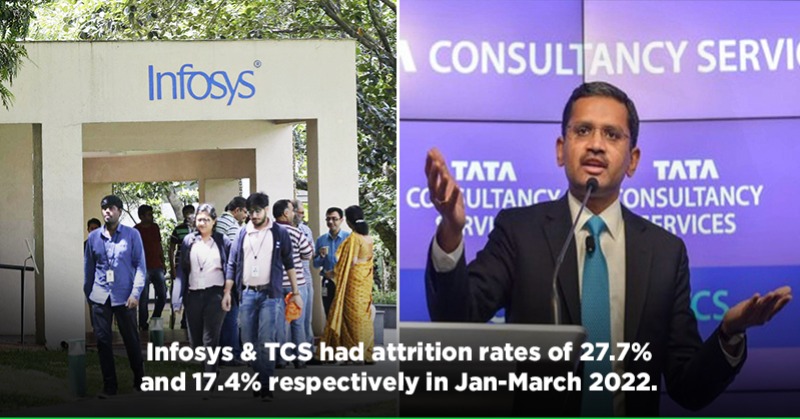

Meanwhile, Cognizant added 33,000 fresh college graduates to their workforce in India in CY2021. Infosys, India’s second-largest IT firm, plans on hiring 55,000 freshers in FY22. These companies have doubled down on hiring freshers and are trying their best to retain existing employees. They expect this trend to continue for a few coming quarters. Major IT firms in India are battling double-digit attrition rates. The report said that around 17.9 million professionals in India would have to switch jobs in a post-Covid world. The study was focused on eight countries, namely – United States, Germany, Japan, France, Spain, the United Kingdom, China and India. The report by McKinsey and Company stated that more than 100 million workers will need to transition to a different occupation by 2030 in a post-Covid-19 scenario. The report added that professions that require high levels of human interaction would likely see greater adoption of automation and AI. In July 2020, a global survey was conducted where 800 senior executives participated two-thirds said they were increasing investment in automation and AI significantly, said McKinsey and Company in a report. The pandemic forced many businesses dependent on people working in close physical proximity to each other to deploy automation and AI to keep the businesses running. Moreover, for 56% of Indian job applicants, job security was the top priority when switching to a new company. At the same time, 55% of Indian professionals claimed job compensation to be a deciding factor when looking for new job opportunities. In a study published by Amazon on the impact of Covid-19 on jobs and future career plans among Indian professionals, 51% of Indian job-seekers are interested in pursuing a career in domains they do not have any experience at all. So it shouldn’t be surprising that many professionals are rethinking their career paths and have concerns about the job search process. For example, working professionals globally had to endure layoffs, pay cuts, long working hours at the onset of the pandemic. The Covid-19 pandemic has compelled many of us to rethink various aspects of our lives. Many organisations calculate their attrition rate on a monthly or quarterly basis.Īttrition rate = Number of employees left / Average number of employees X 100 The attrition rate is calculated by dividing the total number of employees leaving the organisation by the average number of employees present throughout the year. Involuntary attrition is when the organisation asks the employees to leave due to downsizing or job position elimination.Ī higher attrition rate indicates that employees are leaving the organisation frequently, while a low attrition rate points to a longer stay by the employees at the company.

Voluntary attrition is when employees leave the organisation for better prospects or are unhappy with the current company.

Attrition can be voluntary or involuntary. The reduction in the number of employees in an organisation is termed attrition. During the same period, the attrition rate at TCS was 15.3%, and Mindtree reported 21.9%. For instance, in the third quarter of FY22, Infosys reported an attrition rate of 22.5%, while Wipro reported 22.7%. Many IT firms in India have reported high attrition rates for the past few quarters. While this is helping techies demand higher salaries, companies are struggling to retain their best talent, leading to higher attrition rates. Companies are offering pay hikes of 100-200% and even more to techies on their existing salary packages to attract them. Tech firms are ready to pay top-dollar to get the best talent on board, leading to a hiring war among companies. But, there is not enough supply to meet the ever-growing demand.
#Attrition rate in it industry 2022 software#
As a result, demand for cloud engineers, data scientists, software developers and cybersecurity experts has risen through the roof. Many companies adopted the digital-first approach to tackle the newly presented business challenges brought on by the pandemic.


 0 kommentar(er)
0 kommentar(er)
